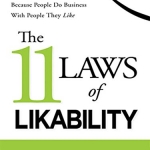Add the Fred Factor to Your Business Blog
Within ten minutes of his house are two giant hardware stores that are known for their low prices , Mark Sanborn relates in his book The Fred Factor, but he never goes to either one. Instead, Sanborn goes to a smaller store about ten minutes away. There, when you walk in the door, knowledgeable helpful staff members greet you and take you to the exact spot where you can find what you need. And, Sanborn adds, they ask enough questions to find out if what you asked for is what you need for the job. All organizations have access to the same information, training, compensation systems, and processes. So why do some succeed and others flop, Sanborn asks? The secret is passionate employees.
How can that “Fred Factor” be made to come across a computer screen, I wondered. With so many potential customers meeting you online these days, rather than in person, how can you replicate the feeling of being greeted by “knowledgeable and helpful staff members”? First-time blog site visitors can, indeed, become customers IF, Neil Patel explains, “you listen to them and give them a good visitor experience.” The goal – moving visitors upwards through the “trust pyramid”, from awareness to understanding, then belief, and finally to action.
The process begins, Patel says, with defining your ideal reader. See that customer as one person, not as groups of people, then develop a unique selling proposition around that very person. Just a Sanborn was saying about his favorite hardware store, success is all about solving problems and making customers happy. What valuable gift can you give to your first-time blog visitors in order to excite and retain them. Put yourself in their shoes and feel their pain, Patel says.
Sanborn was impressed with the fact that the hardware associates were right there at the door to welcome him and help him navigate to precisely the right shelf to find what he needed. In precisely the same way, now that visitors have found their way to your blog, your immediate challenge is to put them at ease by assuring them they’ve come to the right place and convey that they are valued.
Translating a face-to-face shopping experience into a digital visit is the challenge we blog content writers take on. Saying you offer superior customer service is never enough – you have to specifically illustrate ways in which your company’s customer service exceeds the norm. Stories of all kinds help personalize a business blog. Even if a professional writer is composing the content, true-story material increases engagement by readers with the business or practice. Case studies are particularly effective in creating interest, because they are relatable and “real”.
You might not think of simplifying your website navigation as another way to personalize your service, but it absolutely is. Both the content of your blog posts and the navigation paths on the blog site had better be easy, calling for fewer keystrokes and less confusion. Just as the hardware salesperson asked questions before taking Sanborn to the right section of the store, the website can help “steer” visitors to the right click.
Think of ways to add a “Fred Factor” to your website and blog.






Follow us online!